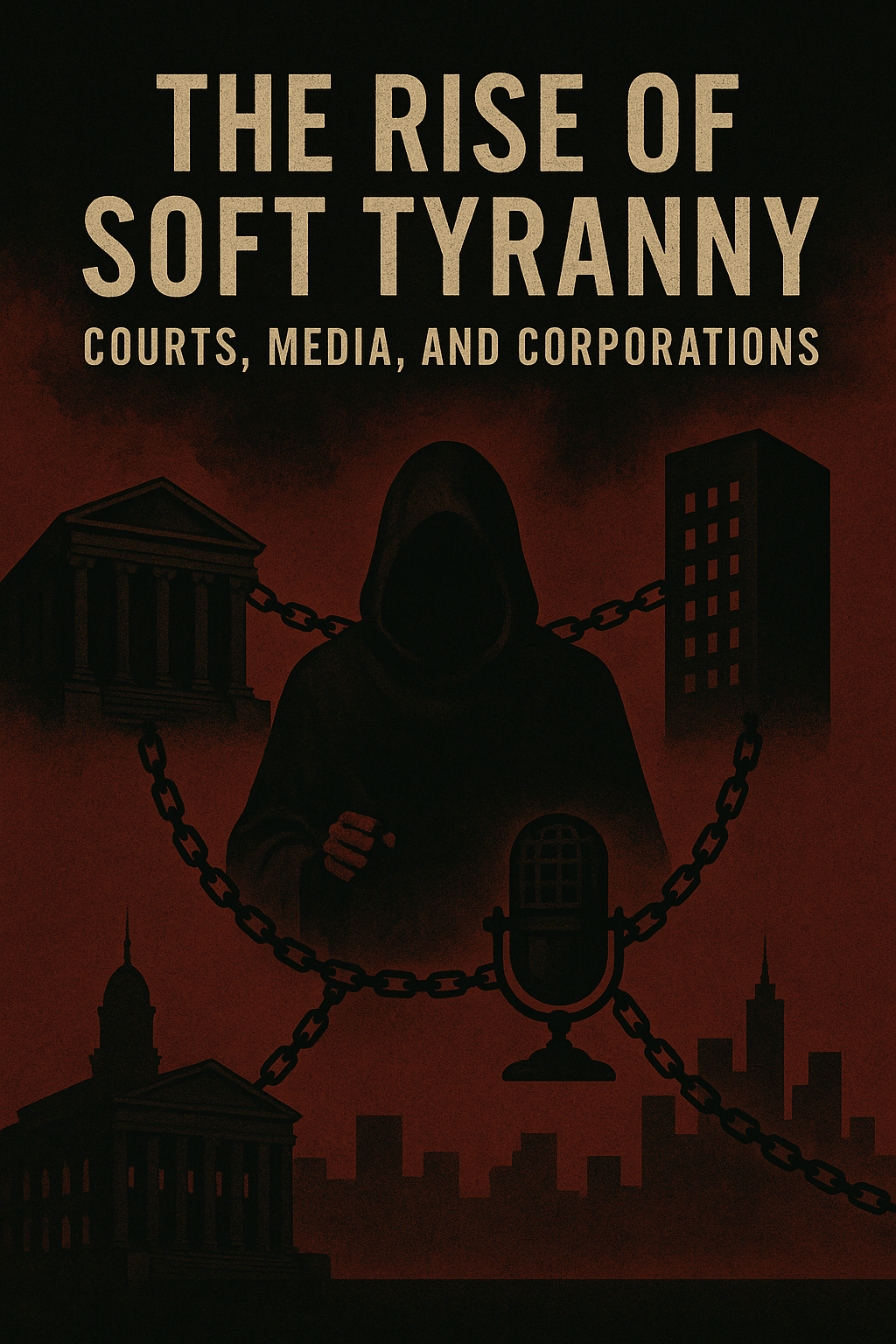Tyranny no longer arrives with swords or decrees. It seeps quietly into daily life—through courts that overstep constitutional bounds, media that manufactures consent, and corporations that enforce ideological conformity. This is soft tyranny: a system where the illusion of freedom masks centralized power and suppressed dissent.
The Judiciary: From Arbiter to Ruler
The judiciary, designed as a co-equal branch to interpret laws within constitutional limits, was meant to be an arbiter, not a ruler. Today, that restraint has eroded. Single district judges now issue universal injunctions—sweeping decrees that halt federal actions nationwide, far beyond their courtrooms’ jurisdiction. No constitutional authority grants one judge power to override national policy, yet it happens routinely. These are not legal decisions but acts of political control, nullifying the electorate’s will and binding the nation to one unelected official’s ideology. This is not the rule of law—it is the rule of rulers.
Early Examples: A Dangerous Evolution
For most of American history, the idea of a single judge blocking national policy was unthinkable. Universal injunctions were virtually nonexistent before the 20th century, with courts limiting rulings to specific parties, leaving governance to the legislative and executive branches. Early 1900s cases hinting at broader judicial power were rare, controversial, and often overturned, sparking little outcry because judges were not seen as policymakers.
Even during the Civil Rights Era, when courts enforced desegregation, they acted cautiously, recognizing that national rulings risked violating the separation of powers. Chief Justice John Marshall, establishing judicial review in Marbury v. Madison (1803), warned courts should only decide individual rights, not second-guess the executive. Alexander Hamilton, in Federalist No. 78, called the judiciary “the least dangerous” branch, wielding only judgment. Progressive jurists like Justice Felix Frankfurter echoed this restraint, insisting courts should not devise national policies. Legal scholar Samuel Bray, writing in 2017, called universal injunctions “a dramatic shift in judicial power” that disrupts the balance of government branches.
How It Accelerated: A Judicial Power Grab
The 2010s saw a quiet revolution in the judiciary. Universal injunctions exploded, particularly during the Trump administration (2017–2020), with nearly half of all such injunctions in U.S. history issued against it. Judges, once neutral referees, became political actors, claiming sweeping authority over national governance without constitutional basis. A single unelected official could nullify an elected executive’s actions, overriding millions of voters by decree.
The pattern was clear: in 2017, a Washington State judge blocked Trump’s travel ban nationwide, setting a precedent for judicial control over immigration policy. Courts later froze efforts to defund sanctuary cities, forced DACA’s continuation, and halted asylum rule changes. In 2019, judges blocked the “public charge” immigration rule and Trump’s use of military funds for the border wall. By 2020, a single court stopped the exclusion of illegal immigrants from the census.
These lawsuits, often coordinated by Democrat attorneys general and activists, were premeditated political strategies. Public figures like Nancy Pelosi and Chuck Schumer celebrated the interventions. What began as cautious rulings became routine judicial warfare, undermining elections and weaponizing courts for ideological ends.
Summary of the Pattern
- Each injunction emboldened the next.
- Lawsuits were politically coordinated.
- Courts expanded their reach: from blocking executive orders to overriding national security and reshaping immigration and representation. Judicial activism now routinely subverts democratic processes.
The Media: From Informers to Enforcers
Traditional media once aimed to inform, letting citizens judge for themselves. Today, outlets act as narrative enforcers, framing or burying stories to drive public opinion. Truth is measured by utility: stories supporting the approved ideology are amplified; those undermining it are censored or mocked. Lies are acceptable if they serve the cause, and dissenters are smeared as extremists.
The Russia collusion narrative, based on a discredited dossier, dominated headlines for years, only to collapse under scrutiny. The Covington Catholic incident saw media falsely portray student Nick Sandmann as an aggressor, ignoring exculpatory footage. The “very fine people” Charlottesville lie persists despite Trump’s clear condemnation of white supremacists. The Hunter Biden laptop story was suppressed as “Russian disinformation,” only later validated. False claims of Border Patrol agents “whipping” migrants in 2021 stirred outrage before being debunked.
In each case, the media’s goal was manipulation: to manufacture outrage, protect allies, and demonize enemies. Soft tyranny is enforced through shame, censorship, and psychological conditioning, cloaked as “journalism.” The free press envisioned by the Founders has become a megaphone for entrenched interests, shaping public reality itself.
The Corporations: Privatizing Tyranny
Corporations, once champions of free enterprise, now enforce political orthodoxy under the guise of “social responsibility.” They deplatform dissenters, debank individuals, and demonetize independent voices. This privatized censorship is insidious: unlike government censorship, it’s dismissed as a “private business decision,” evading First Amendment scrutiny while silencing dissent.
Examples abound: Chase Bank closed General Flynn’s accounts in 2021 over “reputational risk.” PayPal and GoFundMe have denied service to groups clashing with progressive causes. Alex Jones was banned across multiple platforms in 2018 in a coordinated purge. During COVID-19, social media suppressed legitimate discussion on the virus’s origins and vaccine side effects. Canadian truckers protesting mandates faced frozen donations and bank monitoring.
Banks, payment processors, and social media giants now throttle or erase users based on ideology. Participation in society is conditional on obedience, not citizenship. This is not free enterprise—it is outsourced tyranny.
A New Form of Domination
Soft tyranny maintains the appearance of freedom. Elections occur, courts convene, news airs, and companies advertise choice. Yet dissent is punished, independence crushed, and control grows. It is enforced not by guns but by lawsuits, slander, deplatforming, and selective prosecution, justified by appeals to safety and progress. The result is a society where the powerful are unaccountable, and individuals are powerless.
What Comes Next?
History shows no system can suppress freedom forever. The question is whether the awakening happens peacefully—through renewed courage and constitutional adherence—or through collapse and conflict. Soft tyranny thrives in shadows, banking on apathy. But the signs are everywhere, and they are growing harder to ignore.


